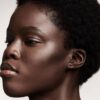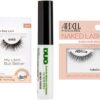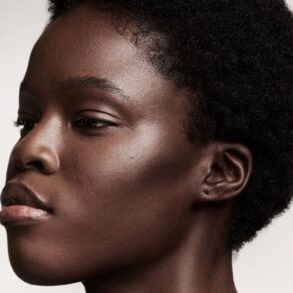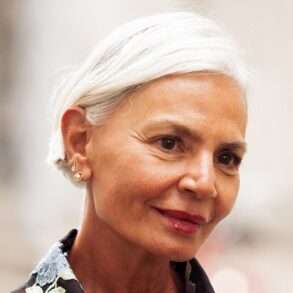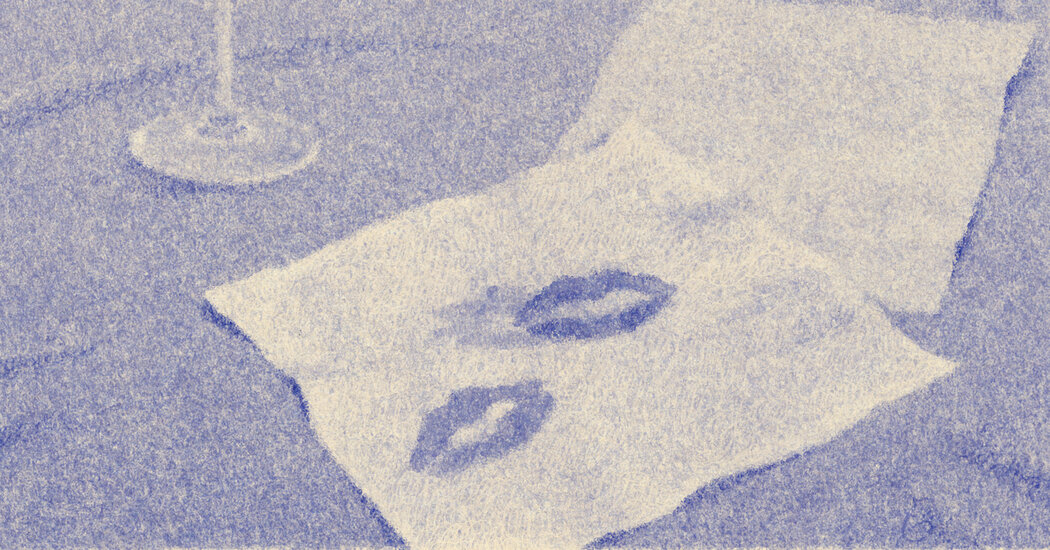
Lunch with an older friend prompts a writer to try some seemingly outdated stratagems for attracting a mate.
I don’t usually wear lipstick. Or heels. Or pants with zippers.
Post-pandemic, post-babies and post-divorce, I’ve grown selective about how I spend my energy and time, and cobbling together a costume of femininity takes a significant amount of both. But I wonder if this laissez-faire perspective (ahem: sweatpants in public) has kept me in relationship purgatory, where I’m never actively dating but still secretly hoping someone special will intuit the beauty beyond my sweats.
On a recent lunch date with a friend in her 80s, I listened with mounting dread as she lamented her own divorce, which happened 30 years ago. With tears in her eyes, she said there’d been no one serious in her life since her marriage ended, and she was resigned to dying alone.
All at once I was looking across the table at my future self. There I was, four decades later, mourning the second-act relationship that had never happened. There I was, ordering Diet Coke refills in a suburban Carrabba’s, convinced my marriage had been my one shot at love and that I had wasted it on the wrong person. There I was, telling a friend half my age that sometimes, no matter how much you want it, love may never show up.
I left the restaurant shaken. My life was half over, and I was on the express train to Lonelyville: a singles room in the nursing home. Ravioli leftovers for one. The distant, dreamlike memory of what it felt like to be touched. I had to change course, but it wasn’t as simple as just “getting back out there.”
The end of my marriage hadn’t been an anomaly — I had never had a healthy, long-term relationship, and I couldn’t understand why. Did I have unrealistic expectations? A fear of intimacy? A broken partner picker? All I knew for sure was that the common denominator in every failed relationship was me.
That night, while swiping past the Instagram posts of partnered family and friends, a sponsored video stopped me mid-scroll. A hunky New Zealander had a question for me. Yes, me. Did I know how to inspire emotional attachment in the man of my choice? (I did not.) He went on to say that creating emotional attachment was the only way to form a lasting relationship. While I had thought of love as something that happened to me, like a natural disaster, this guy was saying that lasting relationships were intentional bonds cultivated by people with a very particular set of skills, none of which I seemed to possess.
I signed up for a relationship boot camp. The first assignment was to read a 102-page PDF that revealed how to “capture his attention and win his heart” using proven principles of attraction. Perfect, I thought. I’ll finally know what to say on a first date, how to sniff out psychopaths before I sleep with them, and how to shepherd that initial spark of attraction into something deeper.
But when I opened the PDF, I found it packed … with lipstick.
Chanel Rouge Coco Bloom. MAC Ruby Woo. Wet ’n’ Wild Shining Hibiscus.
“Principle #1: Have Luscious Lips!”
When a woman is aroused, her blood flow increases, making her lips appear redder and fuller — AKA nature’s lipstick! Studies show that men prefer women who wear lipstick over women who don’t!
I stared at the words, my un-luscious lips agape, wondering if this “boot camp” was nothing more than a collection of Cosmopolitan-style beauty hacks written by ChatGPT.
“Principle #2: Have Wide Hips!”
Over millennia, men learned that coupling with wide-hipped women led to more successful procreative outcomes!
Fine, I thought. Wear makeup, rock a hot bod and swallow every media-inspired standard of beauty. But should I mention my kids on a first date?
“Principle #3: Stick Out Your Sexy Bum!”
It went on like this for 102 pages. I laugh-cried my way through the list, texting pictures of the “principles” to friends and mentally calculating my boot camp refund.
But in the days that followed, I became slightly obsessed with the principles, particularly their “scientific” explanations. Let me be clear: the principles were absurd. They were comically archaic and offensively exclusive to “feminine women seeking masculine men.” But I was spellbound by the idea that attraction could be sparked by something as simple as smudging some color on my mouth.
What if our cultural standards of attractiveness really could be traced back along evolutionary lines to their original source, like a rumor that’s mostly false but partly true? Maybe what had been missing in my quest to attract the right partner was biological. Maybe, without lipstick, I was invisible to men! It would be impossible to inspire emotional attachment in someone who hadn’t even noticed me, right?
I started wearing lipstick on Zoom calls for work. Bright lipstick. Arousal lipstick. I strutted across the grocery store parking lot to create the illusion of wider hips. At my son’s baseball practices, I stuck out my “sexy bum” just to see what it felt like. (It felt stupid.)
I did nothing else out of the ordinary — no makeover, no personality transplant — but men I’d known for years started responding to me differently. For the first time since our sons started playing together, the Baseball Dads seemed aware of my existence.
Cute Dad struck up conversations during practice. Tall Dad noticed me squinting in the bleachers and positioned himself to block the sun from my view. Canadian Dad gave me a high-five and traced his fingers across my palm before letting go.
As preposterous as I initially thought the principles were, they seemed to work. For a few weeks, I felt positively witchy every time some poor sucker let me skip him in line at the self-checkout, and I waited for the attention to manifest a date. Several months later, I’m still waiting.
These days I’ve been getting notifications to order more lipstick, because I’m supposed to be running low, but I haven’t worn lipstick in weeks. It seemed to me that the attention I got when I followed the principles wasn’t leading me to a future I really wanted. Instead, it pointed to an ancient past, prompting a biological reflex that, while initially flattering, felt like a cheap substitute for a real connection. Why put on lipstick just to be reminded that what’s missing in those moments of attraction is what’s most essential?
According to the boot camp syllabus, I’m supposed to be bantering with men on dating apps, using compliments that double as insults because “men want to play.”
You know what I want? A handsome stranger who approaches me from across a crowded room. “I couldn’t help but notice your lipstick,” he might say, handing me a moist toilette to wipe it off. He’ll look me up and down, frowning at the too-tight jeans I can barely zip up. “Let’s get out of here,” he’ll say. “You look like you want to slip into something more comfortable.”
Rebecca Anne Nguyen is the co-author of the memoir “Where War Ends: A Combat Veteran’s 2700-Mile Journey to Heal.”
This post was originally published on this site be sure to check out more of their content.


